Events
| Name | organizer | Where |
|---|---|---|
| MBCC “Doing Business with Mongolia seminar and Christmas Receptiom” Dec 10. 2025 London UK | MBCCI | London UK Goodman LLC |
NEWS
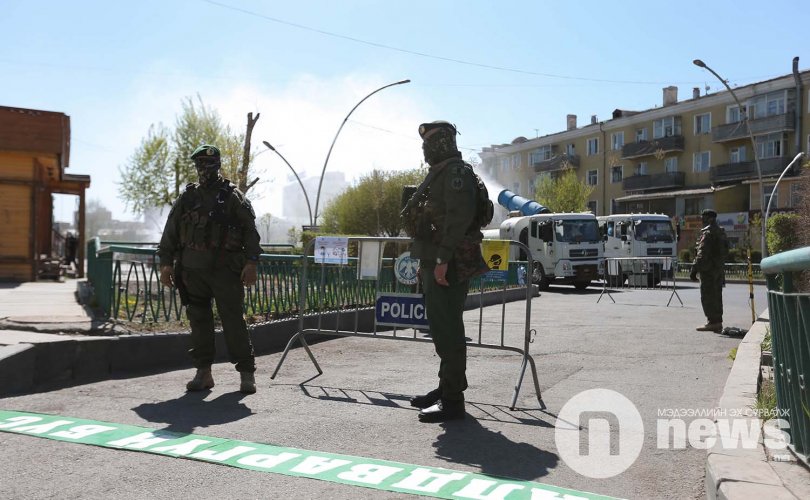
SEC suggests to impose another strict lockdown measures April 3-18, cabinet to decide www.montsame.mn
In recent days, Mongolia has recorded the highest daily increases of new coronavirus infections since the first community transmission detected in the country in November 2020. In connection with Mongolia's daily COVID-19 case counts, which have been at least 300 and up to 600, the State Emergency Commission yesterday, March 29, convened for an online meeting.
The meeting heard presentation by the Ministry of Health on the COVID-19 situation and response measures with suggestion to scale the country’s coronavirus emergency regime level of current Orange Level up to Red Level or the all-out-readiness regime preparedness starting from April 3, Saturday, until April 18, Sunday.
The SEC supported the Health Ministry’s suggestion and decided to submit the proposal for the cabinet’s discussion. The cabinet is expected to review the matter at this week’s regular meeting scheduled on March 31, Wednesday.
Under the Red Level regime, which is regulated to be issued when large-scale community infections of COVID-19 are recorded among general population, operations of all types of non-essential public and private organizations and individuals are restricted and special measures for strict lockdown and quarantine are implemented.

Mongolia to produce 55 percent of petroleum consumption domestically by 2024 www.montsame.mn
Mongolia’s annual consumption of petroleum products reaches 1.95 million tons, according to the Ministry of Mining and Heavy Industry. The country is fully dependent on imports to meet this demand, spending around USD 1 billion annually and the petroleum consumption in a year is expected to rise to 2.5 million by 2024.
The Mining Ministry has informed that the oil refinery development project underway by the government of Mongolia in Altanshiree soum of Dornogobi aimag with investment equal to one-year import cost of petroleum products is capable to produce 1.5 million tons of petroleum each year, including 824,000 tons of diesel, fuel, 339,000 tons of motor fuel, 80,000 jet fuel, 47,000 tons of solid fuel, 43,000 tons of liquefied gas, which are enough to provide 55 percent of total domestic consumption.
The ongoing oil refinery project consists of development of its main technological facilities, power plant, water supply facility, loading and unloading facility, storage, reservoir, conveyer, railroad and auto road. The proect developments are continuing as per schedule, and during its implementation, the project operation is employing around 6,000 workers and once completed, the project is expected to create 600 permanent job places, according to the Mining Ministry.

Wool and cashmere factories commit to sustainable textile production www.montsame.mn
A total of 18 national textile industries have joined to a Voluntary Code of Practice (VCP) for Mongolian sustainable textile production, agreeing for an environmentally-friendly, socially sound, and economically viable production.
The Voluntary Code of Practice aims to enhance and ensure a strong sustainability profile of the Mongolian wool and cashmere industry, allowing for better recognition in the global wool and cashmere market and increased sales due to a sustainability performance that stands out against ordinary textiles. Thus, it has importance to enhance their access to European and other global markets which are increasingly demanding sustainable textile goods.
Voluntary Code of Practice for Mongolian sustainable textile production is the first step of the Mongolian wool and cashmere industry towards the achievement of an internationally acknowledged sustainability standard allowing credible communication of their sustainability performance. It acts as a national benchmark of sustainable production for the Mongolian wool and cashmere processing enterprises.
VCP is composed of a set of criteria that the companies need to meet in order to apply for and to become qualified for higher-level recognition and internationally accredited certifications. Compliance with the VCP’s criteria will enable the Mongolian wool and cashmere industry to demonstrate their engagement towards the demands for sustainable production and reports to the customers about their positive changes of environmental and social profile.
Through Voluntary Code of Practice for Mongolian sustainable textile production the signatory parties will contribute to reducing the environmental and social impact of wool and cashmere production and increase competitiveness of the sector in comparison with not sustainably produced wool and cashmere products. This initial collaboration will allow the goals to be reached rapidly, cost-effectively and at greater scale than by working alone.
The Voluntary Code of Practice for Mongolian sustainable textile production was elaborated within Sustainable textile production and Eco labelling project, implemented by the AVSF Mongolia with financial support from the European Union, and is as a result of an extensive collaboration of key sectoral stakeholders, including the Mongolian wool and cashmere Association and German Center for sustainable consumption and production.

Turquoise Hill’s Oyu Tolgoi declares force majeure on some Chinese contracts www.reuters.com
Turquoise Hill Resources Ltd said on Tuesday its Oyu Tolgoi mining unit in Mongolia declared force majeure on some Chinese contracts, after shipments to China were suspended due to covid-19 related restrictions.
The force majeure compounds problems at one of the world’s largest copper-gold-silver mine Oyu Tolgoi, which is already at the center of a protracted dispute between Turquoise and its top shareholder, Rio Tinto, over funding for the underground expansion of the mine.
Force majeure refers to unexpected external circumstances that prevent a party to a contract from meeting its obligations.
Rio owns 51% of Turquoise Hill, which owns 66% of the Oyu Tolgoi mine. The rest of the mine is owned by the government of Mongolia.
The force majeure is related to coronavirus-related restrictions at the Chinese-Mongolian border crossings, Turquoise Hill said on Tuesday, adding that it was working with Chinese officials to resume the shipments of copper concentrates to its Chinese customers.
Turquoise said that Oyu Tolgoi also confirmed two cases of covid-19 at the site that were managed in compliance with public health guidelines. It also said it has completed over 9,700 PCT tests at the site that have all confirmed negative.
Underground work at the mine was halted for the testing, while ongoing travel restrictions hit people’s movement from Mongolian capital Ulaanbaatar to the mine site, Turquoise said, adding Oyu Tolgoi is developing contingency plans to mitigate related risk.
Open pit mining continues to operate uninterrupted at Oyu Tolgoi, Turquoise Hill said.
(By Shariq Khan and Arathy S Nair; Editing by Shinjini Ganguli)
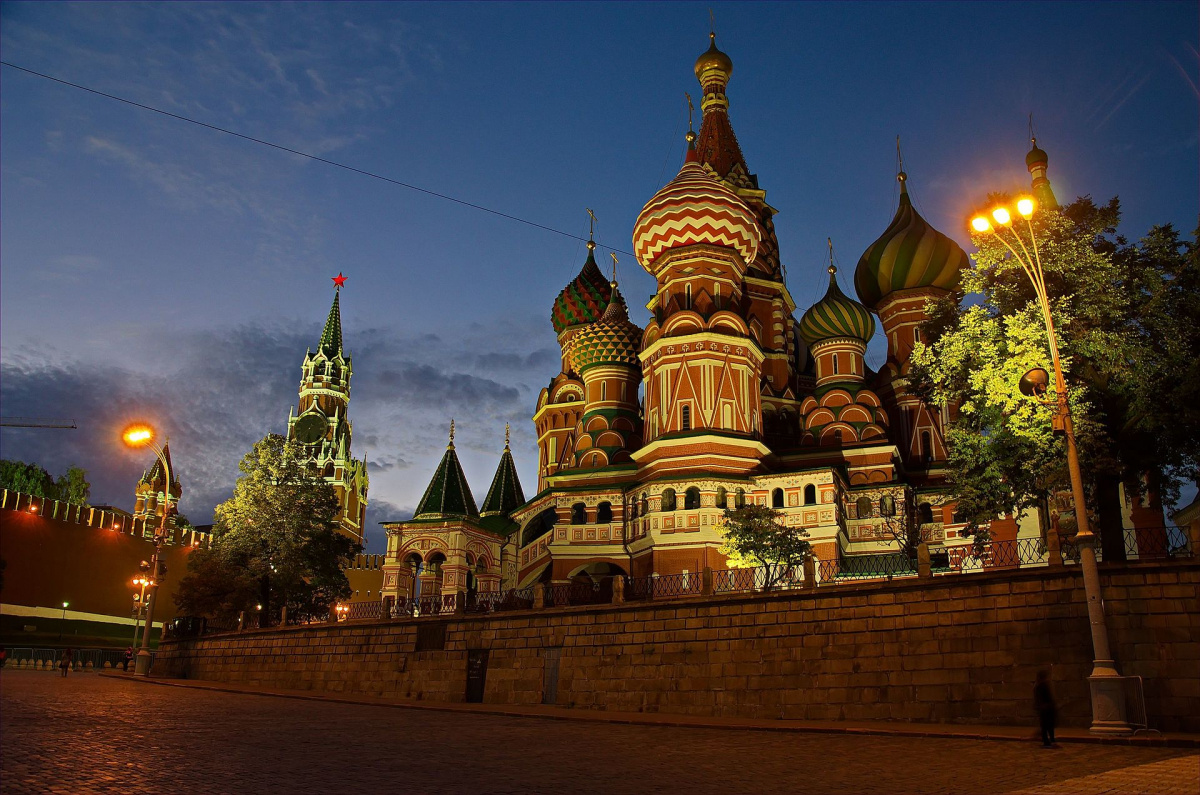
Russia joins global hydrogen race with planned exports to Asia www.rt.com
Russian energy giant Gazprom is planning to start hydrogen exports to China, South Korea and Japan, the company’s First Deputy Oleg Aksyutin wrote in his column in the latest issue of business and science magazine Energy Policy.
According to the senior manager, the shipments of hydrogen could be supplied to Asia by rail, road and water.
“Production of hydrogen in the Russian Far East […] with subsequent export of it to such consumers as Japan, South Korea and China, is of particular interest,” Aksyutin wrote.
He added that the procedures for transporting the raw material to Asia requires an appropriate legal framework concerning taxation and customs regulation, as well as the development of logistics infrastructure.
“In the short-term, Russia and its Asian partners should develop cooperation on exchange of technologies for hydrogen transportation, and for fixation, storage and usage of carbon dioxide,” Aksyutin said, stressing that, on the medium- and long-term horizon, export supplies of hydrogen are possible if there’s commercial demand among potential importers.
Last year, the government included hydrogen energy in Russia’s energy strategy. According to the document, the country is planning to export 200,000 tons of hydrogen by 2024, and to increase supplies to two million tons by 2035.
Exports of Russian hydrogen to Japan are currently under the control of Russian state-run corporation Rosatom. In September 2019, Rusatom Overseas, the company’s subsidiary, and Japan’s Agency for Natural Resources and Energy, signed an agreement to export hydrogen from Russia to Japan.

China boycotts are a warning to Western brands www.cnn.com
London (CNN Business)Companies including H&M, Nike (NKE), Adidas (ADDDF) and Burberry (BBRYF) have been caught in the middle of a political firestorm in China — spooking investors that keep close tabs on a key market.
What's happening: The retailers face boycotts because of stands they've taken in the past against the alleged use of forced labor to produce cotton in China's western region of Xinjiang.
Dozens of Chinese celebrities have terminated contracts or said they'll cut ties with the brands, while H&M, the world's second largest clothing retailer, has been pulled from major e-commerce sites.
H&M and Nike are facing a boycott in China over Xinjiang cotton statements
H&M and Nike are facing a boycott in China over Xinjiang cotton statements
Investor insight: Nike shares tumbled more than 3% Thursday on Wall Street, while Adidas sank more than 6% in Frankfurt. In London, Burberry lost more than 4%. H&M's stock also slid nearly 2% in Sweden.
The outrage was triggered by a social media post from a group linked to the ruling Communist Party, which resurfaced a statement H&M made in September about reports of forced labor in Xinjiang. State media has since targeted other major brands that have previously spoken out.
Human rights groups have repeatedly accused Beijing of detaining Uyghurs and other Muslim minority groups in "re-education" camps where they're forced to make products that find their way into global tech and retail supply chains.
Recent sanctions from the United States and other Western countries over Xinjiang have sparked renewed pushback from the Chinese government, which calls the camps "vocational training centers" designed to combat poverty and religious extremism.
Blowback in China against companies that have spoken out on Xinjiang may pass, according to Bernstein analyst Aneesha Sherman. Shares of H&M rose 1% in early trading Friday, while Nike's stock is up roughly 1.5% in premarket trading.
But the episode is a reminder of the challenges Western brands face as they court the immense spending power of Chinese consumers.
"It's a tough position to manage, because they can't really back down on their [stances], but at the same time they want to make sure they don't abandon the Chinese customer," Sherman told me.
China accounted for roughly 5% of H&M's sales in 2019. Sherman estimates that figure grew to about 10% in 2020, as China's economy recovered faster from coronavirus than its home market of Europe.
"In a year like this, even taking a 5% haircut off the top line is a big hit when H&M is trying to recover," Sherman said.
Luxury brands like Burberry are even more exposed, she added. Burberry listed "any significant change to Chinese consumer spending habits" as a key risk to sales in its most recent annual report.
Big picture: The US-China tensions that gained prominence during the Trump era haven't gone away, with the Biden administration and allies taking a hard line with Beijing. That creates challenges for Western companies that operate in the Chinese market.
"It does affect these brands," Sherman said. Plus, weeks like this only strengthen the hand of local competitors, which are more tapped in to regional tastes and can avoid politically-generated controversy, she noted.
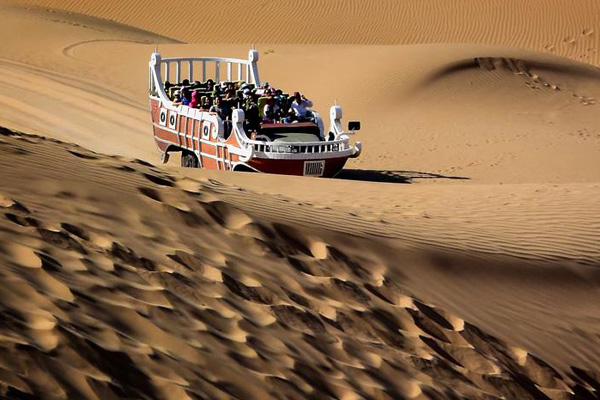
Ferocious sandstorm blankets Beijing again, yellow warning issued www.globaltimes.cn
A sandstorm from outside northern China has enveloped Beijing, 13 days after the Chinese capital was hit by the largest sandstorm in a decade, but is lower in intensity and smaller in scope than last time as shelterbelts in Inner Mongolia helped reduce the amount of dust and prevented sand from drifting in.
There were few pedestrians and vehicles on Beijing’s roads, due to low visibility. The Air Quality Index reached the severest pollution level and visibility in the city dropped to one kilometer or worse.
China’s Central Meteorological Observatory activated yellow sandstorm warnings Saturday morning, forecasting that the strong sandstorm will impact more than 15 regions in northern China due to strong winds.
Analysts said that the reason why sandstorms frequently hit Beijing and sweep across China is that continuous dry climate in Mongolia and northwestern China tends to loosen soil, which forms sand and dust easily following the development of air convection and the exchange of air flows.
However, this wave of sandstorms is lower in intensity and smaller in scope as shelterbelts in Inner Mongolia have reduced the amount of dust and prevented sand from drifting, analysts said.
The sandstorm was also accompanied by ferocious winds. The city has experienced gusts of force 7 to 8, and gusts in mountainous areas soared to levels of force 8 to 10.
The visibility in Beijing ranged from 1 to 2 kilometers, and below 1 kilometer in some parts of the districts of Tongzhou and Fangzhou in Daxing.
The wave of strong sand and dust will last about12 hours from morning until nightfall Sunday, equivalent to the duration of the sandstorm that hit the city on March 15.
The temperature in Mongolia and northwestern China was significantly higher, the precipitation was lower and the surface had gradually thawed, making it easier for dust particles to drift, analysts said.
But unlike the last strong sandstorm which drifted to some provinces in South China, this wave of sandstorm has carried sands from the western and central parts of Inner Mongolia, coming with lower intensity and impacted a smaller area due to the protection from shelterbelts there, said Wang Gengchen, a research fellow at the Institute of Atmospheric Physics of the Chinese Academy of Sciences.
Wang explained to the Global Times on Sunday that as some sand sources were from Inner Mongolia, shelterbelts have reduced the amount of dust and prevented sand from drifting, making the intensity of sand and dust lower than last time, adding that this sandstorm will not sweep central and southern China like the last wave did.
Experts said shelterbelts will reduce the amount of dust within the shelterbelt area, preventing sand from drifting, but it cannot stop remote desert and Gobi areas with forestation projects from having sand dust.
However, experts said that fundamentally overcoming dusty weather lies in global cooperation on prevention and control of sand sources, as expanding desertification in Mongolia and elsewhere will result in sand drifting into China’s territory whipped up by strong winds.
Satellite cloud pictures showed a large area of sand and dust starting to appear in Mongolia Saturday morning due to the impact of the Mongolian cyclone, and the air quality (AQI) of Ulaanbaatar, the capital of Mongolia, has deteriorated.
Global Times

Beijing enveloped in hazardous sandstorm, second time in two weeks www.reuters.com
BEIJING (Reuters) - The Chinese capital Beijing woke on Sunday morning shrouded in thick dust carrying extremely high levels of hazardous particles, as a second sandstorm in two weeks hit the city due to winds from drought-hit Mongolia and northwestern China.
Visibility in the city was reduced, with the tops of some skyscrapers obscured by the sandstorm, and pedestrians were forced to cover their eyes as gusts of dust swept through the streets.
“It’s quite serious today. There’s always a day or two like this (of pollution or dust) each month,” said Mr. Fan, 39, who did not wish to disclose his full name.
Beijing’s official air quality index reached a maximum level of 500 on Sunday morning, with floating particles known as PM10 surpassing 2,000 micrograms per cubic metre in some districts.
Readings of smaller PM2.5 particles were above 300 micrograms per cubic metre, far higher than China’s standard of 35 micrograms.
PM2.5 particles are especially harmful because they are very tiny and can enter the bloodstream, while PM10 is a larger particle that can enter the lungs.
The China Meteorological Administration issued a yellow alert on Friday, warning that a sandstorm was spreading from Mongolia into northern Chinese provinces including Inner Mongolia, Shanxi, Liaoning and Hebei, which surrounds Beijing.
The meteorological office said the recent sandstorms to hit Beijing originated from Mongolia, where relatively warmer temperature this spring and reduced rain resulted in larger areas of bare earth, creating favorable conditions for sandstorms.
Beijing might face more sandstorms in April due to the unfavorable weather this year, the meteorological office said.
Reporting by Sophie Yu, Judy Hua and Martin Pollard; Editing by Michael Perry
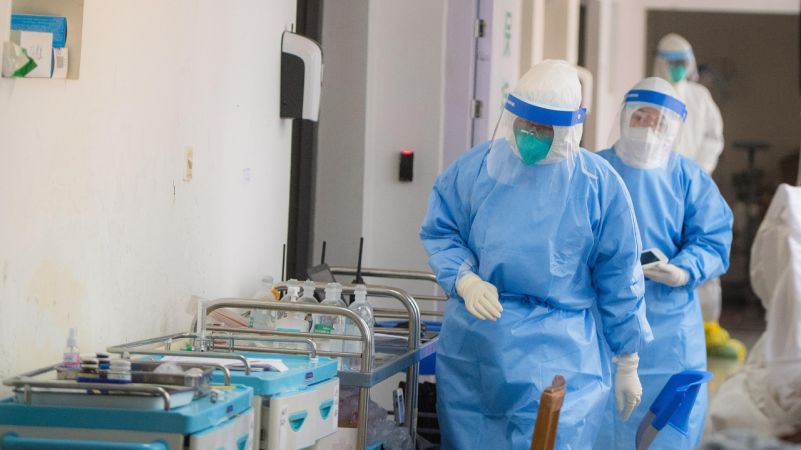
Mongolia logs 321 new COVID-19 cases, total tops 7,000 www.xinhuanet.com
Mongolia reported 321 new COVID-19 infections in the last 24 hours, raising the nationwide count to 7,014, the country's National Center for Communicable Diseases (NCCD) said Sunday.
Meanwhile, 104 more patients have recovered and were discharged from hospitals, bringing the total recoveries to 4,341, the center said.
The Asian country has registered 10 COVID-19-related deaths so far since its first case was confirmed in March 2020.
The country launched a national vaccination campaign in late February, with the aim of vaccinating at least 60 percent of its 3.3 million population. More than 276,000 people have been vaccinated so far, according to the health ministry.
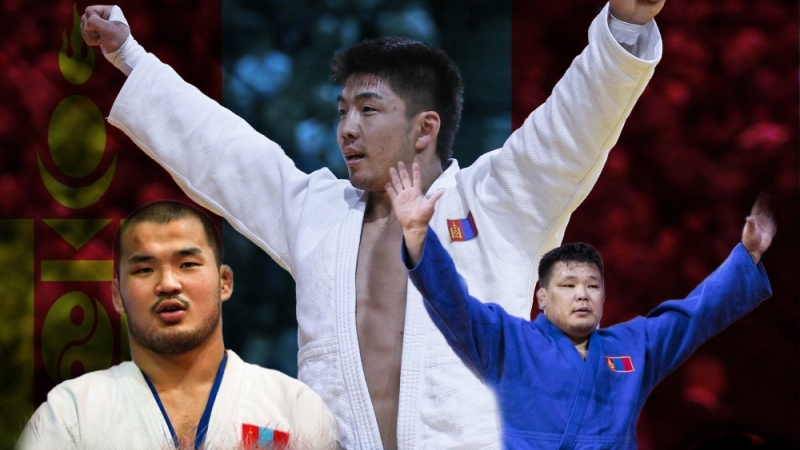
Mongolian judoka M.Urantsetseg grabs gold at Tbilisi Grand Slam www.montsame.mn
Mongolian judoka M.Uransetseg has won the gold medal from the women’s 48 kg weight class at the Tbilisi Grand Slam 2021, winning two Grand Slam tournaments back-to-back. A total of 464 judokas are participating in the IJF Grand Slam tournament, which is being organized in Tbilisi, Georgia from March 26 to March 28.
Following a first-round bye, she defeated Italian judoka Sofia Petitto with an ippon at 1:30 minutes in Round 2. While she won against Romanian judoka Monica Ungureanu with a joint locking technique at 2:58 minutes in her next match, she defeated Slovenian judoka Marusa Stangar with another ippon at 2:50 in the semi-finals.
In the final match, she faced off against Italian judoka Francesca Milani, coming out victorious by forcing a submission.
Moreover, IM G.Kherlen won the bronze medal from the men’s 66 kg weight class on the first day of the tournament. With a first-round bye in Pool C, he defeated British judoka Michael Fryer and Georgian judoka Beka Tsifiani through penalties.
While he won his next match against Russian judoka Mikhail Puliaev with a waza-ari in overtime, he was defeated by Uzbekistani judoka Sardor Nurillaev through penalties.
In his final match in the tournament, he faced off against Georgian judoka Bagrati Niniashvili, coming out on top with an ippon winning him the bronze medal. With this, IM G.Kherlen gains 500 points in the World Ranking List, climbing up to 4th place.
- «
- 1
- 2
- 3
- 4
- 5
- 6
- 7
- 8
- 9
- 10
- 11
- 12
- 13
- 14
- 15
- 16
- 17
- 18
- 19
- 20
- 21
- 22
- 23
- 24
- 25
- 26
- 27
- 28
- 29
- 30
- 31
- 32
- 33
- 34
- 35
- 36
- 37
- 38
- 39
- 40
- 41
- 42
- 43
- 44
- 45
- 46
- 47
- 48
- 49
- 50
- 51
- 52
- 53
- 54
- 55
- 56
- 57
- 58
- 59
- 60
- 61
- 62
- 63
- 64
- 65
- 66
- 67
- 68
- 69
- 70
- 71
- 72
- 73
- 74
- 75
- 76
- 77
- 78
- 79
- 80
- 81
- 82
- 83
- 84
- 85
- 86
- 87
- 88
- 89
- 90
- 91
- 92
- 93
- 94
- 95
- 96
- 97
- 98
- 99
- 100
- 101
- 102
- 103
- 104
- 105
- 106
- 107
- 108
- 109
- 110
- 111
- 112
- 113
- 114
- 115
- 116
- 117
- 118
- 119
- 120
- 121
- 122
- 123
- 124
- 125
- 126
- 127
- 128
- 129
- 130
- 131
- 132
- 133
- 134
- 135
- 136
- 137
- 138
- 139
- 140
- 141
- 142
- 143
- 144
- 145
- 146
- 147
- 148
- 149
- 150
- 151
- 152
- 153
- 154
- 155
- 156
- 157
- 158
- 159
- 160
- 161
- 162
- 163
- 164
- 165
- 166
- 167
- 168
- 169
- 170
- 171
- 172
- 173
- 174
- 175
- 176
- 177
- 178
- 179
- 180
- 181
- 182
- 183
- 184
- 185
- 186
- 187
- 188
- 189
- 190
- 191
- 192
- 193
- 194
- 195
- 196
- 197
- 198
- 199
- 200
- 201
- 202
- 203
- 204
- 205
- 206
- 207
- 208
- 209
- 210
- 211
- 212
- 213
- 214
- 215
- 216
- 217
- 218
- 219
- 220
- 221
- 222
- 223
- 224
- 225
- 226
- 227
- 228
- 229
- 230
- 231
- 232
- 233
- 234
- 235
- 236
- 237
- 238
- 239
- 240
- 241
- 242
- 243
- 244
- 245
- 246
- 247
- 248
- 249
- 250
- 251
- 252
- 253
- 254
- 255
- 256
- 257
- 258
- 259
- 260
- 261
- 262
- 263
- 264
- 265
- 266
- 267
- 268
- 269
- 270
- 271
- 272
- 273
- 274
- 275
- 276
- 277
- 278
- 279
- 280
- 281
- 282
- 283
- 284
- 285
- 286
- 287
- 288
- 289
- 290
- 291
- 292
- 293
- 294
- 295
- 296
- 297
- 298
- 299
- 300
- 301
- 302
- 303
- 304
- 305
- 306
- 307
- 308
- 309
- 310
- 311
- 312
- 313
- 314
- 315
- 316
- 317
- 318
- 319
- 320
- 321
- 322
- 323
- 324
- 325
- 326
- 327
- 328
- 329
- 330
- 331
- 332
- 333
- 334
- 335
- 336
- 337
- 338
- 339
- 340
- 341
- 342
- 343
- 344
- 345
- 346
- 347
- 348
- 349
- 350
- 351
- 352
- 353
- 354
- 355
- 356
- 357
- 358
- 359
- 360
- 361
- 362
- 363
- 364
- 365
- 366
- 367
- 368
- 369
- 370
- 371
- 372
- 373
- 374
- 375
- 376
- 377
- 378
- 379
- 380
- 381
- 382
- 383
- 384
- 385
- 386
- 387
- 388
- 389
- 390
- 391
- 392
- 393
- 394
- 395
- 396
- 397
- 398
- 399
- 400
- 401
- 402
- 403
- 404
- 405
- 406
- 407
- 408
- 409
- 410
- 411
- 412
- 413
- 414
- 415
- 416
- 417
- 418
- 419
- 420
- 421
- 422
- 423
- 424
- 425
- 426
- 427
- 428
- 429
- 430
- 431
- 432
- 433
- 434
- 435
- 436
- 437
- 438
- 439
- 440
- 441
- 442
- 443
- 444
- 445
- 446
- 447
- 448
- 449
- 450
- 451
- 452
- 453
- 454
- 455
- 456
- 457
- 458
- 459
- 460
- 461
- 462
- 463
- 464
- 465
- 466
- 467
- 468
- 469
- 470
- 471
- 472
- 473
- 474
- 475
- 476
- 477
- 478
- 479
- 480
- 481
- 482
- 483
- 484
- 485
- 486
- 487
- 488
- 489
- 490
- 491
- 492
- 493
- 494
- 495
- 496
- 497
- 498
- 499
- 500
- 501
- 502
- 503
- 504
- 505
- 506
- 507
- 508
- 509
- 510
- 511
- 512
- 513
- 514
- 515
- 516
- 517
- 518
- 519
- 520
- 521
- 522
- 523
- 524
- 525
- 526
- 527
- 528
- 529
- 530
- 531
- 532
- 533
- 534
- 535
- 536
- 537
- 538
- 539
- 540
- 541
- 542
- 543
- 544
- 545
- 546
- 547
- 548
- 549
- 550
- 551
- 552
- 553
- 554
- 555
- 556
- 557
- 558
- 559
- 560
- 561
- 562
- 563
- 564
- 565
- 566
- 567
- 568
- 569
- 570
- 571
- 572
- 573
- 574
- 575
- 576
- 577
- 578
- 579
- 580
- 581
- 582
- 583
- 584
- 585
- 586
- 587
- 588
- 589
- 590
- 591
- 592
- 593
- 594
- 595
- 596
- 597
- 598
- 599
- 600
- 601
- 602
- 603
- 604
- 605
- 606
- 607
- 608
- 609
- 610
- 611
- 612
- 613
- 614
- 615
- 616
- 617
- 618
- 619
- 620
- 621
- 622
- 623
- 624
- 625
- 626
- 627
- 628
- 629
- 630
- 631
- 632
- 633
- 634
- 635
- 636
- 637
- 638
- 639
- 640
- 641
- 642
- 643
- 644
- 645
- 646
- 647
- 648
- 649
- 650
- 651
- 652
- 653
- 654
- 655
- 656
- 657
- 658
- 659
- 660
- 661
- 662
- 663
- 664
- 665
- 666
- 667
- 668
- 669
- 670
- 671
- 672
- 673
- 674
- 675
- 676
- 677
- 678
- 679
- 680
- 681
- 682
- 683
- 684
- 685
- 686
- 687
- 688
- 689
- 690
- 691
- 692
- 693
- 694
- 695
- 696
- 697
- 698
- 699
- 700
- 701
- 702
- 703
- 704
- 705
- 706
- 707
- 708
- 709
- 710
- 711
- 712
- 713
- 714
- 715
- 716
- 717
- 718
- 719
- 720
- 721
- 722
- 723
- 724
- 725
- 726
- 727
- 728
- 729
- 730
- 731
- 732
- 733
- 734
- 735
- 736
- 737
- 738
- 739
- 740
- 741
- 742
- 743
- 744
- 745
- 746
- 747
- 748
- 749
- 750
- 751
- 752
- 753
- 754
- 755
- 756
- 757
- 758
- 759
- 760
- 761
- 762
- 763
- 764
- 765
- 766
- 767
- 768
- 769
- 770
- 771
- 772
- 773
- 774
- 775
- 776
- 777
- 778
- 779
- 780
- 781
- 782
- 783
- 784
- 785
- 786
- 787
- 788
- 789
- 790
- 791
- 792
- 793
- 794
- 795
- 796
- 797
- 798
- 799
- 800
- 801
- 802
- 803
- 804
- 805
- 806
- 807
- 808
- 809
- 810
- 811
- 812
- 813
- 814
- 815
- 816
- 817
- 818
- 819
- 820
- 821
- 822
- 823
- 824
- 825
- 826
- 827
- 828
- 829
- 830
- 831
- 832
- 833
- 834
- 835
- 836
- 837
- 838
- 839
- 840
- 841
- 842
- 843
- 844
- 845
- 846
- 847
- 848
- 849
- 850
- 851
- 852
- 853
- 854
- 855
- 856
- 857
- 858
- 859
- 860
- 861
- 862
- 863
- 864
- 865
- 866
- 867
- 868
- 869
- 870
- 871
- 872
- 873
- 874
- 875
- 876
- 877
- 878
- 879
- 880
- 881
- 882
- 883
- 884
- 885
- 886
- 887
- 888
- 889
- 890
- 891
- 892
- 893
- 894
- 895
- 896
- 897
- 898
- 899
- 900
- 901
- 902
- 903
- 904
- 905
- 906
- 907
- 908
- 909
- 910
- 911
- 912
- 913
- 914
- 915
- 916
- 917
- 918
- 919
- 920
- 921
- 922
- 923
- 924
- 925
- 926
- 927
- 928
- 929
- 930
- 931
- 932
- 933
- 934
- 935
- 936
- 937
- 938
- 939
- 940
- 941
- 942
- 943
- 944
- 945
- 946
- 947
- 948
- 949
- 950
- 951
- 952
- 953
- 954
- 955
- 956
- 957
- 958
- 959
- 960
- 961
- 962
- 963
- 964
- 965
- 966
- 967
- 968
- 969
- 970
- 971
- 972
- 973
- 974
- 975
- 976
- 977
- 978
- 979
- 980
- 981
- 982
- 983
- 984
- 985
- 986
- 987
- 988
- 989
- 990
- 991
- 992
- 993
- 994
- 995
- 996
- 997
- 998
- 999
- 1000
- 1001
- 1002
- 1003
- 1004
- 1005
- 1006
- 1007
- 1008
- 1009
- 1010
- 1011
- 1012
- 1013
- 1014
- 1015
- 1016
- 1017
- 1018
- 1019
- 1020
- 1021
- 1022
- 1023
- 1024
- 1025
- 1026
- 1027
- 1028
- 1029
- 1030
- 1031
- 1032
- 1033
- 1034
- 1035
- 1036
- 1037
- 1038
- 1039
- 1040
- 1041
- 1042
- 1043
- 1044
- 1045
- 1046
- 1047
- 1048
- 1049
- 1050
- 1051
- 1052
- 1053
- 1054
- 1055
- 1056
- 1057
- 1058
- 1059
- 1060
- 1061
- 1062
- 1063
- 1064
- 1065
- 1066
- 1067
- 1068
- 1069
- 1070
- 1071
- 1072
- 1073
- 1074
- 1075
- 1076
- 1077
- 1078
- 1079
- 1080
- 1081
- 1082
- 1083
- 1084
- 1085
- 1086
- 1087
- 1088
- 1089
- 1090
- 1091
- 1092
- 1093
- 1094
- 1095
- 1096
- 1097
- 1098
- 1099
- 1100
- 1101
- 1102
- 1103
- 1104
- 1105
- 1106
- 1107
- 1108
- 1109
- 1110
- 1111
- 1112
- 1113
- 1114
- 1115
- 1116
- 1117
- 1118
- 1119
- 1120
- 1121
- 1122
- 1123
- 1124
- 1125
- 1126
- 1127
- 1128
- 1129
- 1130
- 1131
- 1132
- 1133
- 1134
- 1135
- 1136
- 1137
- 1138
- 1139
- 1140
- 1141
- 1142
- 1143
- 1144
- 1145
- 1146
- 1147
- 1148
- 1149
- 1150
- 1151
- 1152
- 1153
- 1154
- 1155
- 1156
- 1157
- 1158
- 1159
- 1160
- 1161
- 1162
- 1163
- 1164
- 1165
- 1166
- 1167
- 1168
- 1169
- 1170
- 1171
- 1172
- 1173
- 1174
- 1175
- 1176
- 1177
- 1178
- 1179
- 1180
- 1181
- 1182
- 1183
- 1184
- 1185
- 1186
- 1187
- 1188
- 1189
- 1190
- 1191
- 1192
- 1193
- 1194
- 1195
- 1196
- 1197
- 1198
- 1199
- 1200
- 1201
- 1202
- 1203
- 1204
- 1205
- 1206
- 1207
- 1208
- 1209
- 1210
- 1211
- 1212
- 1213
- 1214
- 1215
- 1216
- 1217
- 1218
- 1219
- 1220
- 1221
- 1222
- 1223
- 1224
- 1225
- 1226
- 1227
- 1228
- 1229
- 1230
- 1231
- 1232
- 1233
- 1234
- 1235
- 1236
- 1237
- 1238
- 1239
- 1240
- 1241
- 1242
- 1243
- 1244
- 1245
- 1246
- 1247
- 1248
- 1249
- 1250
- 1251
- 1252
- 1253
- 1254
- 1255
- 1256
- 1257
- 1258
- 1259
- 1260
- 1261
- 1262
- 1263
- 1264
- 1265
- 1266
- 1267
- 1268
- 1269
- 1270
- 1271
- 1272
- 1273
- 1274
- 1275
- 1276
- 1277
- 1278
- 1279
- 1280
- 1281
- 1282
- 1283
- 1284
- 1285
- 1286
- 1287
- 1288
- 1289
- 1290
- 1291
- 1292
- 1293
- 1294
- 1295
- 1296
- 1297
- 1298
- 1299
- 1300
- 1301
- 1302
- 1303
- 1304
- 1305
- 1306
- 1307
- 1308
- 1309
- 1310
- 1311
- 1312
- 1313
- 1314
- 1315
- 1316
- 1317
- 1318
- 1319
- 1320
- 1321
- 1322
- 1323
- 1324
- 1325
- 1326
- 1327
- 1328
- 1329
- 1330
- 1331
- 1332
- 1333
- 1334
- 1335
- 1336
- 1337
- 1338
- 1339
- 1340
- 1341
- 1342
- 1343
- 1344
- 1345
- 1346
- 1347
- 1348
- 1349
- 1350
- 1351
- 1352
- 1353
- 1354
- 1355
- 1356
- 1357
- 1358
- 1359
- 1360
- 1361
- 1362
- 1363
- 1364
- 1365
- 1366
- 1367
- 1368
- 1369
- 1370
- 1371
- 1372
- 1373
- 1374
- 1375
- 1376
- 1377
- 1378
- 1379
- 1380
- 1381
- 1382
- 1383
- 1384
- 1385
- 1386
- 1387
- 1388
- 1389
- 1390
- 1391
- 1392
- 1393
- 1394
- 1395
- 1396
- 1397
- 1398
- 1399
- 1400
- 1401
- 1402
- 1403
- 1404
- 1405
- 1406
- 1407
- 1408
- 1409
- 1410
- 1411
- 1412
- 1413
- 1414
- 1415
- 1416
- 1417
- 1418
- 1419
- 1420
- 1421
- 1422
- 1423
- 1424
- 1425
- 1426
- 1427
- 1428
- 1429
- 1430
- 1431
- 1432
- 1433
- 1434
- 1435
- 1436
- 1437
- 1438
- 1439
- 1440
- 1441
- 1442
- 1443
- 1444
- 1445
- 1446
- 1447
- 1448
- 1449
- 1450
- 1451
- 1452
- 1453
- 1454
- 1455
- 1456
- 1457
- 1458
- 1459
- 1460
- 1461
- 1462
- 1463
- 1464
- 1465
- 1466
- 1467
- 1468
- 1469
- 1470
- 1471
- 1472
- 1473
- 1474
- 1475
- 1476
- 1477
- 1478
- 1479
- 1480
- 1481
- 1482
- 1483
- 1484
- 1485
- 1486
- 1487
- 1488
- 1489
- 1490
- 1491
- 1492
- 1493
- 1494
- 1495
- 1496
- 1497
- 1498
- 1499
- 1500
- 1501
- 1502
- 1503
- 1504
- 1505
- 1506
- 1507
- 1508
- 1509
- 1510
- 1511
- 1512
- 1513
- 1514
- 1515
- 1516
- 1517
- 1518
- 1519
- 1520
- 1521
- 1522
- 1523
- 1524
- 1525
- 1526
- 1527
- 1528
- 1529
- 1530
- 1531
- 1532
- 1533
- 1534
- 1535
- 1536
- 1537
- 1538
- 1539
- 1540
- 1541
- 1542
- 1543
- 1544
- 1545
- 1546
- 1547
- 1548
- 1549
- 1550
- 1551
- 1552
- 1553
- 1554
- 1555
- 1556
- 1557
- 1558
- 1559
- 1560
- 1561
- 1562
- 1563
- 1564
- 1565
- 1566
- 1567
- 1568
- 1569
- 1570
- 1571
- 1572
- 1573
- 1574
- 1575
- 1576
- 1577
- 1578
- 1579
- 1580
- 1581
- 1582
- 1583
- 1584
- 1585
- 1586
- 1587
- 1588
- 1589
- 1590
- 1591
- 1592
- 1593
- 1594
- 1595
- 1596
- 1597
- 1598
- 1599
- 1600
- 1601
- 1602
- 1603
- 1604
- 1605
- 1606
- 1607
- 1608
- 1609
- 1610
- 1611
- 1612
- 1613
- 1614
- 1615
- 1616
- 1617
- 1618
- 1619
- 1620
- 1621
- 1622
- 1623
- 1624
- 1625
- 1626
- 1627
- 1628
- 1629
- 1630
- 1631
- 1632
- 1633
- 1634
- 1635
- 1636
- 1637
- 1638
- 1639
- 1640
- 1641
- 1642
- 1643
- 1644
- 1645
- 1646
- 1647
- 1648
- 1649
- 1650
- 1651
- 1652
- 1653
- 1654
- 1655
- 1656
- 1657
- 1658
- 1659
- 1660
- 1661
- 1662
- 1663
- 1664
- 1665
- 1666
- 1667
- 1668
- 1669
- 1670
- 1671
- 1672
- 1673
- 1674
- 1675
- 1676
- 1677
- 1678
- 1679
- 1680
- 1681
- 1682
- 1683
- 1684
- 1685
- 1686
- 1687
- 1688
- 1689
- 1690
- 1691
- 1692
- 1693
- 1694
- »






